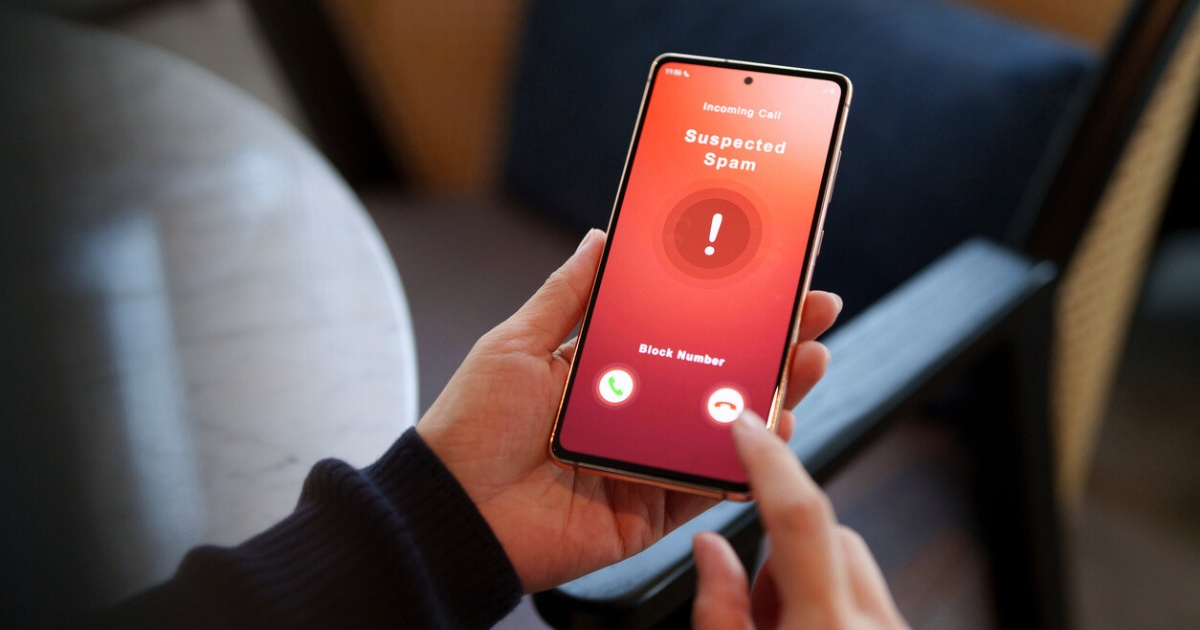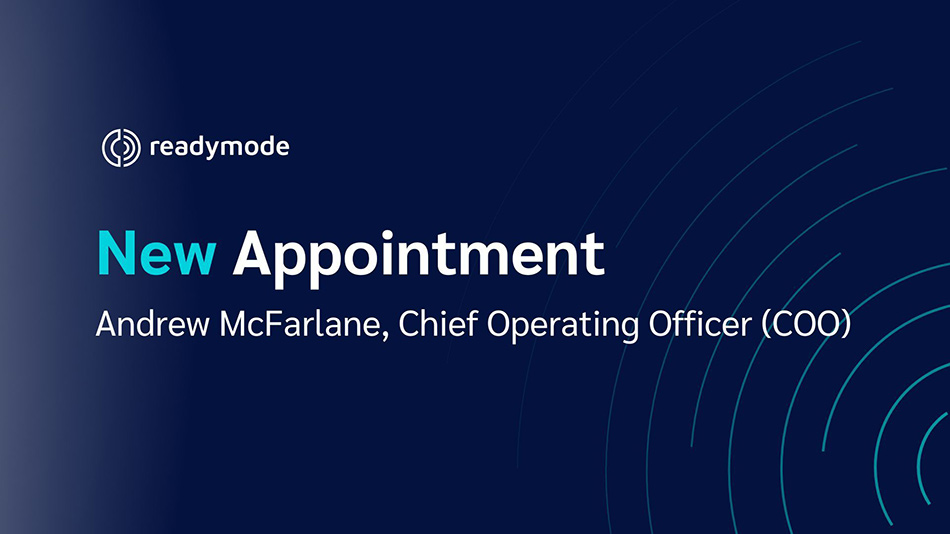As consumers become more aware of nuisance phone calls, businesses risk being flagged as “Spam Likely” if they don’t adopt smarter outbound calling tactics. Avoiding this label is crucial to building trust with both carriers and customers.
“Spam Likely”—also known as “Potential Spam,” “Spam,” “Scam Risk,” or “Scam Likely”—is the result of increased vigilance against fraudulent activity. Apps can now analyze calling patterns to determine whether a caller is legitimate or a potential spammer. Many cell phones automatically filter such calls and display a “Spam Likely” warning on the caller ID screen.
That’s why it’s essential to understand what triggers this label and how to prevent your calls from being flagged.
Impact of Flagged Calls on Your Reputation and Contact Rate
Having your numbers flagged as “Spam Likely” can seriously affect how your business is perceived. It may suggest to customers and carriers that your business is unreliable or involved in fraudulent activity. As a result, you’ll likely see a drop in your connect rate—the ability for a call to go through—and your contact rate, which reflects how often your agents reach a live person. Negative call labels reduce the chances of your calls connecting without being blocked or ignored.
Once your calls are labeled as spam, trust erodes. People may begin to associate your brand with nuisance calls or scams. This leads to fewer answered calls, reduced chances of connecting with prospects, missed sales opportunities, and greater difficulty reaching customers.
Flagged numbers also waste your sales team’s time, as they end up making calls that won’t reach a real person. For example, if your team makes 500 calls per day but 80% of them are flagged, most of your calls are effectively wasted. Reducing the number of flagged numbers can significantly improve your chances of reaching your targets.
With spam calls on the rise, this is becoming a growing concern for outbound sales call centers. For example:
- Hiya’s Global Call Threat Report identified 11.3 billion suspected spam calls in Q4 of 2024 alone. That’s about 123 million unwanted phone calls every day.
- TrueCaller reported that more than 56 million Americans were impacted by spam calls in 2024, resulting in an estimated $25.4 billion in losses from phone scams.
How to Tell Your Numbers Are Being Flagged as Spam or Scam Likely
A drop in outbound calling performance is a telltale sign that your number may have been flagged as “Spam Likely” or “Scam Likely.” When this happens, customers’ phone carriers may filter or block your calls, causing them to go unanswered or fail to connect. Recipients may also see negative call labels appear on their caller ID, making them more likely to ignore the call or block your number altogether.
With Readymode’s caller ID reputation monitoring tools, you can remove the guesswork. These tools show you which numbers have been flagged and how your caller ID appears to recipients. Readymode’s Token, through STIR/SHAKEN (short for Secure Telephone Identity Revisited/Signature-Based Handling of Asserted Information Using toKENs), allows customers to see real screenshots of how their caller IDs appear.
Readymode’s carrier partner is STIR/SHAKEN-compliant under the Federal Communications Commission’s (FCC) rules and regulations, and that compliance is built into the platform. This helps customers increase connect rates, reduce call failures, and avoid blocked calls. As a result, sales agents spend more time speaking with customers, improving customer experience, and hitting targets.
Why Is My Phone Number Showing Up as Spam or Scam Likely?
There’s often no clear way to determine why phone numbers (DIDs) get flagged. However, certain factors are known to contribute to numbers being flagged, such as high call volumes, failed connection attempts, or inheriting a number previously linked to fraudulent activity. Still, there are best practices you can follow, like limiting the volume of calls made per phone number.
Blocked or Spoofed Caller ID
Phone numbers associated with fraudulent practices—such as using blocked or spoofed caller IDs—are more likely to be flagged. Spoof calls display false caller ID information to hide the caller’s identity, an illegal activity that’s on the rise. Americans received 31 billion robocalls in the first six months of 2023, and between 40% and 60% of those involved caller ID spoofing, according to Robokiller research.
There’s often no way to prevent spoofing, which makes caller ID reputation monitoring tools with managed remediation, such as Readymode, very useful. While you may not be able to prevent phone numbers from being spoofed, you can monitor activity to catch issues early and use remediation tools to address them.
High Call Volume and Frequency
Making too many calls in a short time from a single number can raise red flags with carriers. The higher the volume, the more likely the number is to be flagged as potential spam.
Suspicious Call Behavior
Numbers that repeatedly make short calls, have low connection rates, drop calls, or are tied to aggressive sales tactics are more likely to be flagged by spam detection systems. Strong scripts and effective sales training are essential for helping agents build rapport with customers and spend more time on the phone with them. Additionally, the better your lead data, the more likely customers are to be interested in your calls, improving both your connect and contact rates.
Phone Carrier Policies
Carriers use algorithms to monitor call activity. These may include thresholds for call volume, failed connection attempts, or unusual patterns that trigger spam labeling. A number might be flagged by one carrier but not others, and vice versa. With Readymode, you can see which numbers are flagged by which carrier. Plus, Autopilot lets you set your campaigns to call only from clean numbers—or from numbers flagged by just one or two carriers—so you can balance minimizing risk with maximizing outreach.
Manual User Reporting
Consumers can report numbers they believe to be spam directly to their carrier. Once reported, the number may be flagged as “Spam Likely” to protect other users from unwanted calls. This highlights the importance of agent training. Done right, it equips your team to build trust, engage effectively, and reduce the chances of your calls being manually reported. Strong training also contributes to a better overall customer experience.
How Can I Prevent My Numbers from Being Flagged as Spam or Scam Likely?
You can maintain a positive phone number reputation and reduce the risk of being flagged by following a set of proven best practices. While it’s impossible to completely avoid numbers being flagged, the right approach and tools can help you reduce the chances and make your outreach more effective.
These tips can help you show carriers and customers that your outbound calling operation is legit:
1. Register Your Phone Numbers
Registering your numbers helps ensure they’re recognized as legitimate and not being used for fraudulent activity. It tells carriers that the numbers belong to your business, improving your caller ID reputation and increasing the likelihood that calls will be answered.
Phone number registration is a critical part of STIR/SHAKEN protocol, which enables businesses to achieve full attestation. Readymode only sells phone numbers from Tier 1 carriers and handles registration as part of Managed Remediation in Readymode iQ.
2. Manage Your Call Volume and Frequency
Carriers monitor for suspicious activity, including high call volumes from a single number over a short time. This behavior can trigger spam filters. Based on Readymode’s internal data and industry best practices, we recommend limiting outbound call volume to 75 calls per day per number. That’s why it’s crucial to have enough phone numbers to distribute the call volume evenly. Readymode iQ helps manage call traffic with caller ID reputation monitoring and Autopilot features that keep call patterns consistent and prevent overuse.
For example, Dial Masters Solutions turned to Readymode iQ to optimize outbound calling, identify numbers flagged as spam, and improve outreach. Within three months, DMS saw a 30% increase in lead conversion rates, a 25% boost in agent productivity, and 20% higher customer engagement.
3. Follow Rules and Regulations
Outbound teams must follow industry regulations, including the Telephone Consumer Protection Act, the National Do Not Call Registry (NDNCR), and other FCC rules. Staying compliant is critical to protecting your phone number reputation and avoiding fines.
For example, people listed on the NDNCR should not be contacted without their express consent. In addition to federal regulations, businesses are also required to maintain their own internal Do Not Call (DNC) lists. Readymode iQ supports compliance on both fronts through built-in tools like DNC list management, state-specific calling restrictions, and customizable call cadences. Our integrations with third-party tools further streamline the process by helping scrub call lists against the NDNCR.
4. Deliver a Strong Customer Experience (CX)

Avoiding the spam label isn’t just about compliance; it’s even more about building trust. Aggressive behaviors like repeated calls to unanswered numbers or abrupt hang-ups can lead to reports and flags. Instead, focus on creating positive customer interactions that help your sales agents spend more time on the phone, such as through strong scripts and effective sales training.
A better experience leads to higher answer rates and longer conversations—both signs of a trusted caller. A good example is virtual assistant and Business Process Outsourcing (BPO) provider VABizGrowth, which used Readymode iQ to streamline workflows and boost productivity. With tools like caller ID reputation monitoring, the company increased contact rates by up to 500%.
5. Warm Up Your Phone Numbers
Before launching high-volume campaigns, it’s important to gradually build a positive reputation. “Warming up” a number means starting with a small volume of calls to establish trust with carriers. Caller ID reputation monitoring and Managed Remediation features under Readymode iQ help you warm up your numbers, maintain consistent call volumes, and avoid sudden changes that may trigger negative call labels.
For example, home services provider Premier Home Solutions used Readymode iQ to proactively monitor its caller ID reputation and ensure its calls reached more customers. The company quickly saw a 4x increase in productivity, which allowed its lead generation team to book more appointments and enjoy sustainable growth.
6. Use Local Presence Dialing
Displaying a local caller ID that matches the prospect’s area code can increase the chances of a call being answered. Local presence dialing displays a caller ID with a local area code that matches your prospect’s region. Unlike illegal caller ID spoofing, it makes your calls appear local to each customer, in turn boosting the likelihood of them picking up. Readymode’s predictive, preview, power, and progressive dialing modes make it easy to apply local presence dialing at scale.
7. Remediate Flagged Numbers
If a number does get flagged, fast remediation is essential. Readymode iQ includes Managed Remediation to restore your phone number reputation and get your flagged numbers back into rotation. It also proactively monitors, prevents, and resolves flagged numbers for you. Thanks to Readymode’s strong carrier relationships, you benefit from faster resolutions and can develop effective strategies to manage and prevent flagged numbers.
Fix Your Phone Number Reputation
Consumers are becoming more aware of spam and fraudulent calls, making it more important than ever to build and maintain a strong phone number reputation. To improve your chances of getting calls answered:
- Monitor your caller ID reputation to identify flagged numbers and see how your business appears to recipients
- Ensure agents follow applicable rules and regulations
- Prioritize strong, respectful customer experiences
- Control call volume and frequency across your numbers
- Warm up new numbers before launching full-scale campaigns
- Use local presence dialing to increase trust and answer rates
- Remediate flagged numbers promptly to restore reputation
Readymode’s platform is built to strengthen your outbound calling strategy and minimize the risk of being flagged as “Spam” or “Scam Likely.” Features like call pacing, compliant call recording, and local presence dialing help protect your caller ID reputation and improve connection rates.
With Readymode iQ, you gain access to advanced tools such as custom call cadences, Managed Remediation, Autopilot, and real-time caller ID reputation monitoring—all designed to help you build trust with carriers and customers alike.
Want to see the impact for yourself? Check out our success stories and book a demo to see how Readymode can transform your outbound performance.
Rob Latham
Rob is a writer focused primarily on business technology, from AI and cybersecurity to SaaS, cloud, and contact center innovation. He is particularly passionate about the role that technology plays in improving people’s lives. With a background in journalism and content marketing, Rob also has a keen interest in sports, music and travel.








